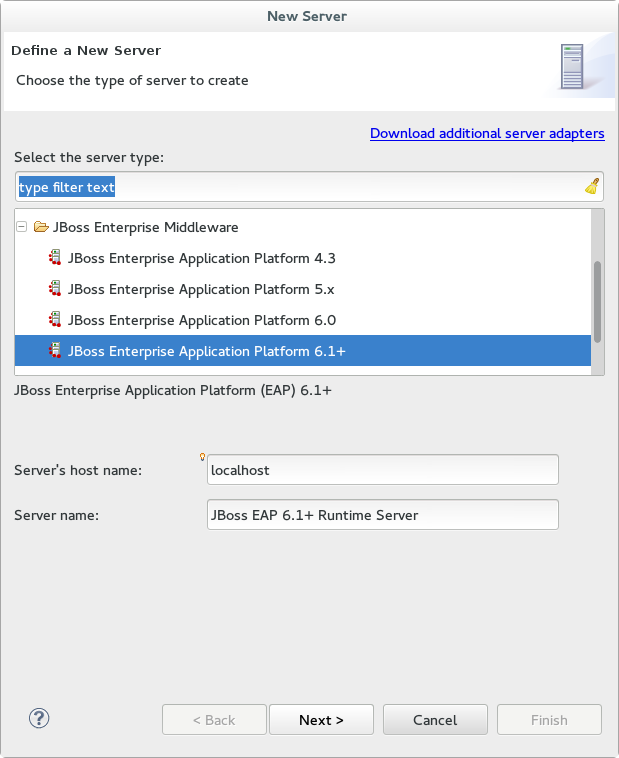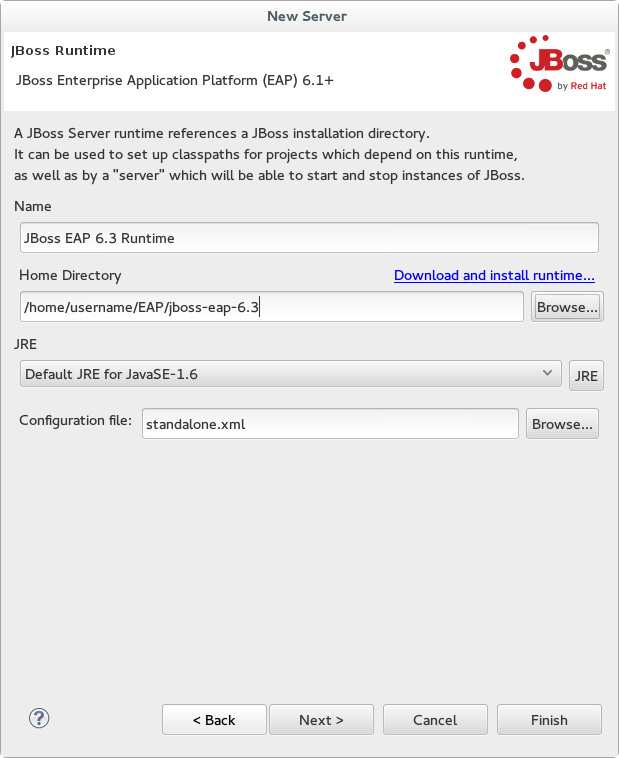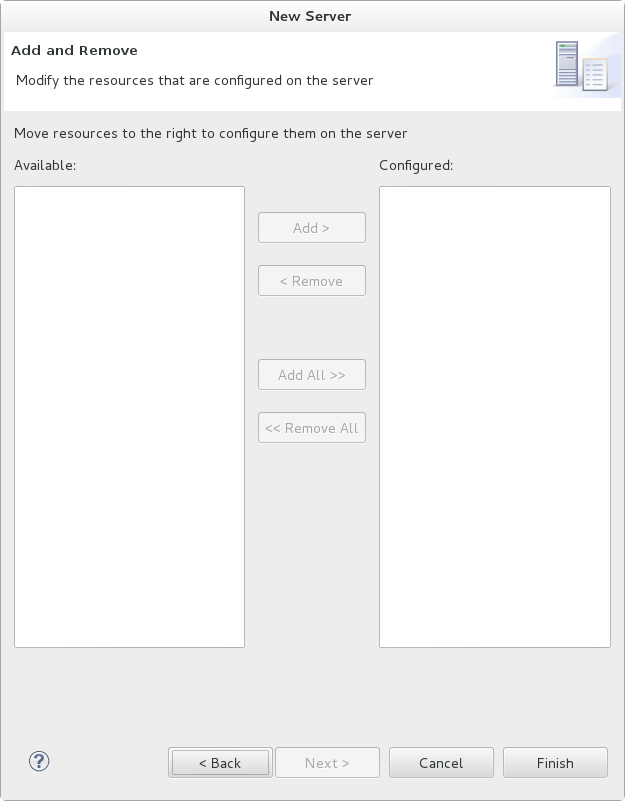1.3. Set Up the Development Environment
1.3.1. Download and Install Red Hat JBoss Developer Studio
1.3.1.1. Setup Red Hat JBoss Developer Studio
1.3.1.2. Download Red Hat JBoss Developer Studio 7.1
- Go to https://access.redhat.com/.
- Select Downloads from the menu at the top of the page.
- Find
Red Hat JBoss Developer Studioin the list and click on it. - Select the appropriate version and click Download.
1.3.1.3. Install Red Hat JBoss Developer Studio 7.1
Procedure 1.1. Install Red Hat JBoss Developer Studio 7.1
- Open a terminal.
- Move into the directory containing the downloaded
.jarfile. - Run the following command to launch the GUI installer:
java -jar jbdevstudio-build_version.jar
- Click Next to start the installation process.
- Select I accept the terms of this license agreement and click Next.
- Adjust the installation path and click Next.
Note
If the installation path folder does not exist, a prompt will appear. Click Ok to create the folder. - Choose a JVM, or leave the default JVM selected, and click Next.
- Add any application platforms available, and click Next.
- Review the installation details, and click Next.
- Click Next when the installation process is complete.
- Configure the desktop shortcuts for Red Hat JBoss Developer Studio, and click Next.
- Click Done.
1.3.1.4. Start Red Hat JBoss Developer Studio
Procedure 1.2. Command to start Red Hat JBoss Developer Studio
- Open a terminal.
- Change into the installation directory.
- Run the following command to start Red Hat JBoss Developer Studio:
[localhost]$ ./jbdevstudio
1.3.1.5. Add the JBoss EAP Server Using Define New Server
These instructions assume this is your first introduction to Red Hat JBoss Developer Studio 7.x and you have not yet added any JBoss EAP servers. The procedure below adds the JBoss server using the Define New Server wizard.
Procedure 1.3. Add the server
- Open the Servers tab. If there is no Servers tab, add it to the panel as follows:
- Click Window → Show View → Other....
- Select Servers from the Server folder and click OK.
- Click on the link to create a new server or right-click within the blank Server panel and select New → Server.

Figure 1.1. Add a new server - No servers available
- Expand JBoss Enterprise Middleware and choose JBoss Enterprise Application Platform 6.1+. Click Next to create the JBoss runtime and define the server. The next time you define a new server, this dialog displays a Server runtime environment selection with the new runtime definition.

Figure 1.2. Define a New Server
- Enter a name, for example "JBoss EAP 6.3 Runtime". Under Home Directory, click Browse and navigate to your JBoss EAP install location. Then click Next.

Figure 1.3. Add New Server Runtime Environment
Note
Some quickstarts require that you run the server with a different profile or additional arguments. To deploy a quickstart that requires thefullprofile, you must define a new server and add a Server Runtime Environment that specifiesstandalone-full.xmlfor the Configuration file. Be sure to give the new server a descriptive name. - On this screen you define the server behavior. You can start the server manually or let Red Hat JBoss Developer Studio manage it for you. You can also define a remote server for deployment and determine if you want to expose the management port for that server, for example, if you need connect to it using JMX. In this example, we assume the server is local and you want Red Hat JBoss Developer Studio to manage your server so you do not need to check anything. Click Next.

Figure 1.4. Define the New JBoss Server Behavior
- This screen allows you to configure existing projects for the new server. Because you do not have any projects at this point, click Finish.

Figure 1.5. Modify resources for the new JBoss server
Result
The JBoss EAP Runtime Server is listed in the Servers tab.

Figure 1.6. Server appears in the server list

